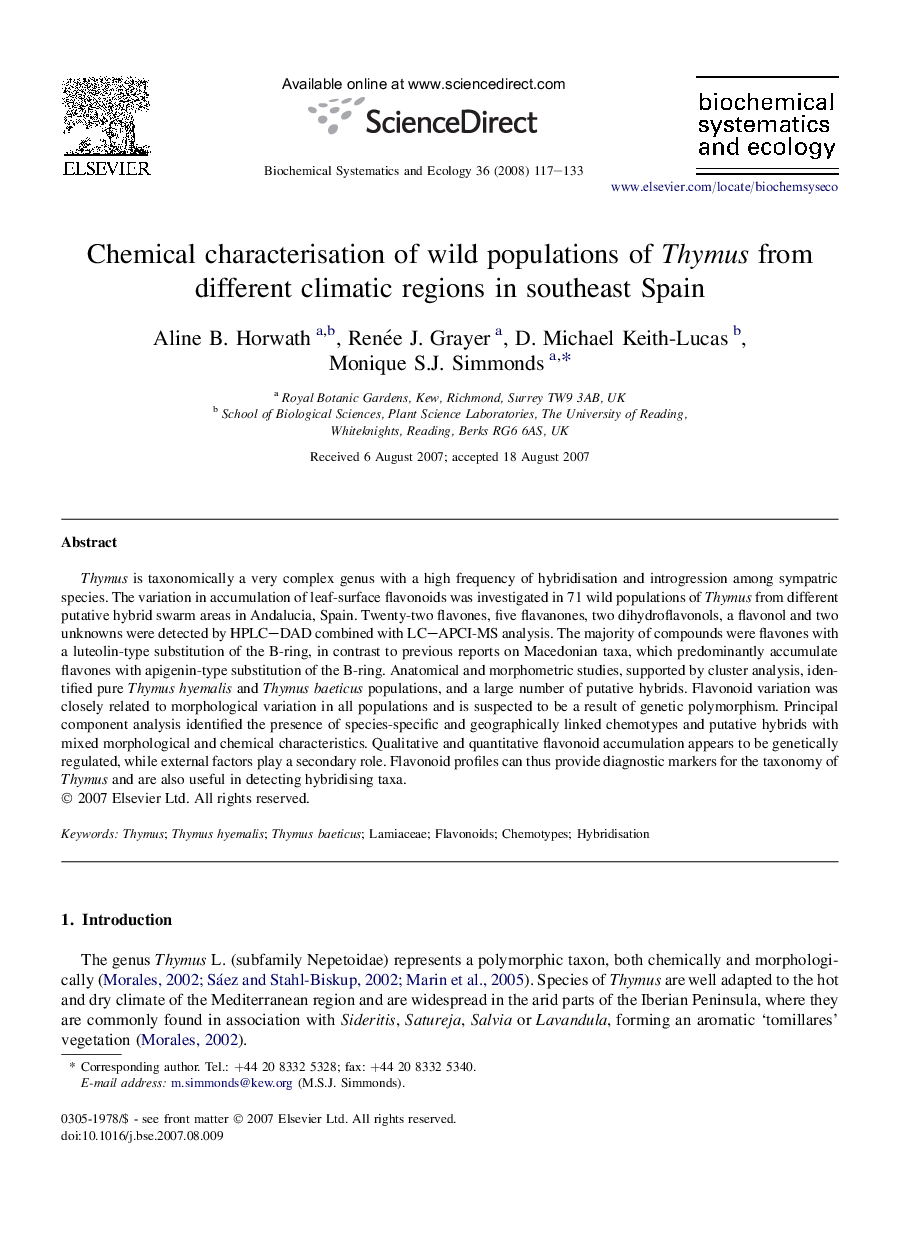| Article ID | Journal | Published Year | Pages | File Type |
|---|---|---|---|---|
| 1352385 | Biochemical Systematics and Ecology | 2008 | 17 Pages |
Thymus is taxonomically a very complex genus with a high frequency of hybridisation and introgression among sympatric species. The variation in accumulation of leaf-surface flavonoids was investigated in 71 wild populations of Thymus from different putative hybrid swarm areas in Andalucia, Spain. Twenty-two flavones, five flavanones, two dihydroflavonols, a flavonol and two unknowns were detected by HPLC–DAD combined with LC–APCI-MS analysis. The majority of compounds were flavones with a luteolin-type substitution of the B-ring, in contrast to previous reports on Macedonian taxa, which predominantly accumulate flavones with apigenin-type substitution of the B-ring. Anatomical and morphometric studies, supported by cluster analysis, identified pure Thymus hyemalis and Thymus baeticus populations, and a large number of putative hybrids. Flavonoid variation was closely related to morphological variation in all populations and is suspected to be a result of genetic polymorphism. Principal component analysis identified the presence of species-specific and geographically linked chemotypes and putative hybrids with mixed morphological and chemical characteristics. Qualitative and quantitative flavonoid accumulation appears to be genetically regulated, while external factors play a secondary role. Flavonoid profiles can thus provide diagnostic markers for the taxonomy of Thymus and are also useful in detecting hybridising taxa.
